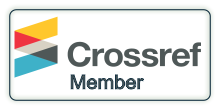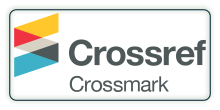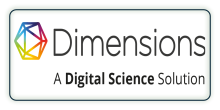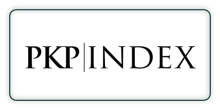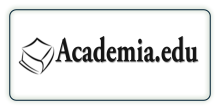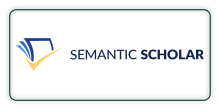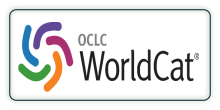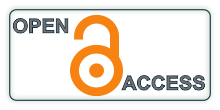PUBLIC EXPENDITURE ON EDUCATION IN INDIA: TRENDS AND IMPLICATIONS
DOI:
https://doi.org/10.29121/ijetmr.v12.i6.2025.1625Keywords:
Expenditure Trends, Educational Policy, Academic Investment, Funding, DevelopmentAbstract
Public spending on education in India has risen sharply in recent decades, signaling transformative changes in the country's educational system. This study presents a detailed analysis of budgetary allocations, focusing on the distribution of funds across various levels of education. It identifies and evaluates key trends in public education expenditure, considering factors such as demographic shifts, economic conditions, and government policies. By examining financial patterns over time, the study aims to illuminate the shifting priorities of the Indian government in the education sector. Policymakers, educators, and other stakeholders must comprehend these tendencies in order to allocate resources and design policies with knowledge. The study also explores the makeup of educational spending, concentrating on how money is distributed to important areas including curriculum improvement, teacher pay, infrastructure development, and technology integration. The purpose of this compositional analysis is to identify sectoral priorities and evaluate whether budgetary allotments support more general goals of enhancing educational results and access. Additionally, the study investigates how public funds are allocated to primary, secondary, and postsecondary education levels. A better grasp of the government's dedication to meeting the varied educational demands of different age groups and academic stages can be gained by examining investment trends at these levels. All things considered, this study provides insightful information about the complex dynamics of Indian public spending on education. It offers crucial direction for developing policies meant to improve the caliber, accessibility, and inclusivity of education in the nation by offering a thorough examination of trends, composition, and allocations.
Downloads
References
Ansari, T. H., & Khan, M. A. (2018). An Analysis of Public Expenditure on Education in India. World Wide Journal of Multidisciplinary Research and Development, 4(4), 89-92.
Bhatia, R., Jain, T., & Lim, Y. (2019). On the Bures-Wasserstein Distance Between Positive Definite Matrices. Expositiones Mathematicae, 37(2), 165-191. https://doi.org/10.1016/j.exmath.2018.01.002 DOI: https://doi.org/10.1016/j.exmath.2018.01.002
Bhattacharyya, P. (2019). Public Expenditure on Education and Economic Growth: A State-Level Analysis in India. Humanities & Social Sciences Reviews, 7(6), 533-539. https://doi.org/10.18510/hssr.2019.7683 DOI: https://doi.org/10.18510/hssr.2019.7683
Chatterji, M., Mohan, S., & Dastidar, S. G. (2015). Determinants of Public Education Expenditure: Evidence from Indian States. International Journal of Education Economics and Development, 6(1), 1-19. https://doi.org/10.1504/IJEED.2015.068355 DOI: https://doi.org/10.1504/IJEED.2015.068355
Das, J. (2017). A Study on Cost-Effectiveness of Higher Education with Particular Reference to Barama College. IOSR Journal of Humanities and Social Science, 22(4), 36-38. https://doi.org/10.9790/0837-2204043638 DOI: https://doi.org/10.9790/0837-2204043638
Del Boca, D., Monfardini, C., & See, S. G. (2018). Government Education Expenditures, Pre-Primary Education and School Performance: A Cross-Country Analysis. Ssrn Electronic Journal. https://doi.org/10.2139/ssrn.3172649 DOI: https://doi.org/10.2139/ssrn.3172649
Fadlli, D., et al. (2019). The Effect of Government Expenditure on Education Performance in NTB (2010-2016). International Journal of Scientific & Technology Research, 8(7), 868-876.
Fonchamnyo, D. C., & Sama, M. C. (2016). Determinants of Public Spending Efficiency in Education and Health: Evidence from Selected CEMAC countries. Journal of Economics and Finance, 40, 199-210. https://doi.org/10.1007/s12197-014-9310-6 DOI: https://doi.org/10.1007/s12197-014-9310-6
Gavurova, B., et al. (2017). Relative Efficiency of Government Expenditure on Secondary Education. Journal of International Studies, 10(2), 329-343. https://doi.org/10.14254/2071-8330.2017/10-2/23 DOI: https://doi.org/10.14254/2071-8330.2017/10-2/23
Jones, M. (2019). The Politics of Education: A Critical Introduction. Routledge.
Kumar, A. (2019). Public Expenditure on Education in India: An Analysis. Journal of Education and Social Policy, 6(4), 99-110.
Kumar, S. (2020). Education Budgets in South Asia: Towards a Comparative Perspective. Compare: A Journal of Comparative and International Education, 50(1), 95-112.
Kumar, S. (2020). Financing Secondary Education in India: A Critical Appraisal. Journal of Educational Planning and Administration, 34(3), 207-220.
Kundu, A. (2018). The Effectiveness of Public Spending on Education and Health Care in the Indian Economy. The Indian Economic Journal, 65(1-4), 140-158. https://doi.org/10.1177/0019466217727885 DOI: https://doi.org/10.1177/0019466217727885
Levin, H. (1988). Cost-Effectiveness and Educational Policy. Educational Evaluation and Policy Analysis, 10(1), 51-69. https://doi.org/10.3102/01623737010001051 DOI: https://doi.org/10.3102/01623737010001051
Ministry of Finance. (2023). Union Budget. Government of India.
Mitra, A. (2015). Public Spending in Higher Education in India: A Benefit Incidence Analysis. Higher Education for the Future, 2(1), 71-91. https://doi.org/10.1177/2347631114558191 DOI: https://doi.org/10.1177/2347631114558191
OECD. (2021). Digital Education Policy Outlook 2021. OECD Publishing.
Oriakhi, D. E., & Ameh, G. (2014). Government Expenditure and the Development of the Education Sector in Nigeria: An Evaluation. Review of Public Administration and Management, 3(5), 147-160.
Patrick, J., et al. (2011). Cost-Effectiveness Analysis of Education and Health Interventions in Developing Countries. Inter-American Development Bank, 1, 1-43. IDB-TN-332.
Sasikumar, G. (2019). Analysis on Improvement of School and Higher Education in Tamil Nadu. The International Journal of Analytical and Experimental Modal Analysis, 11(9), 2840-2856.
Sharma, R., Singh, S. K., & Kumar, P. (2018). Teacher Recruitment and Retention in India: The Role of Salary and Non-Salary Incentives. International Journal of Educational Development, 62, 53-63.
Smith, J. (2018). Education Expenditure and Economic Growth: An Empirical Analysis. International Journal of Educational Development, 61, 165-173.
Solihin, A., et al. (2017). Efficiency and Effectiveness of Government Expenditure on Education at Districts/Cities Level in East Java, Indonesia. Asian Social Science, 13(8). https://doi.org/10.5539/ass.v13n8p91 DOI: https://doi.org/10.5539/ass.v13n8p91
Tamang, P. (2011). The Impact of Education Expenditure on India's Economic Growth. Journal of International Academic Research, 11(3), 14-20.
UNESCO. (2018). Inclusion and Education: All Means All. Global Education Monitoring Report. Unesco.
Uchenna, C., et al. (2016). Government Education Spending and Education Outcome in Nigeria. International Journal of Economics, Finance and Management Sciences, 4(4), 223-226. https://doi.org/10.11648/j.ijefm.20160404.18 DOI: https://doi.org/10.11648/j.ijefm.20160404.18
University Grants Commission. (2021). Higher Education in India: At a Glance.
Vítek, L., & Martínková, L. (2015). Assessment of Efficiency of Expenditure Programmes in Education: Primary Education in the Czech Republic. Procedia Economics and Finance, 25, 607-614. https://doi.org/10.1016/S2212-5671(15)00775-3 DOI: https://doi.org/10.1016/S2212-5671(15)00775-3
Wang, D., & Fu, M. (2009). The Evaluation of Higher Education Expenditure Performance and Investment Mechanism Reform. International Education Studies, 12(6), 575-665. https://doi.org/10.5539/ies.v2n1p18 DOI: https://doi.org/10.5539/ies.v2n1p18
Windham, D. M. (1988). Effectiveness Indicators in the Economic Analysis of Educational Activities. International Journal of Educational Research, 12(6), 575-665. https://doi.org/10.1016/0883-0355(88)90011-0 DOI: https://doi.org/10.1016/0883-0355(88)90011-0
World Health Organization. (2022). Nurturing Care Handbook: Strategic Action 1: Lead and Invest: How to do Governance, Planning, and Financing. WHO.
Published
How to Cite
Issue
Section
License
Copyright (c) 2025 Navneet Guleria, R.K. Mittal, Tejee Isha, Supriya Goutam

This work is licensed under a Creative Commons Attribution 4.0 International License.
License and Copyright Agreement
In submitting the manuscript to the journal, the authors certify that:
- They are authorized by their co-authors to enter into these arrangements.
- The work described has not been formally published before, except in the form of an abstract or as part of a published lecture, review, thesis, or overlay journal.
- That it is not under consideration for publication elsewhere.
- That its release has been approved by all the author(s) and by the responsible authorities – tacitly or explicitly – of the institutes where the work has been carried out.
- They secure the right to reproduce any material that has already been published or copyrighted elsewhere.
- They agree to the following license and copyright agreement.
Copyright
Authors who publish with International Journal of Engineering Technologies and Management Research agree to the following terms:
- Authors retain copyright and grant the journal right of first publication with the work simultaneously licensed under a Creative Commons Attribution License (CC BY-SA 4.0) that allows others to share the work with an acknowledgment of the work's authorship and initial publication in this journal.
- Authors can enter into separate, additional contractual arrangements for the non-exclusive distribution of the journal's published version of the work (e.g., post it to an institutional repository or edit it in a book), with an acknowledgment of its initial publication in this journal.
- Authors are permitted and encouraged to post their work online (e.g., in institutional repositories or on their website) before and during the submission process, as it can lead to productive exchanges, as well as earlier and greater citation of published work.
For More info, please visit CopyRight Section












